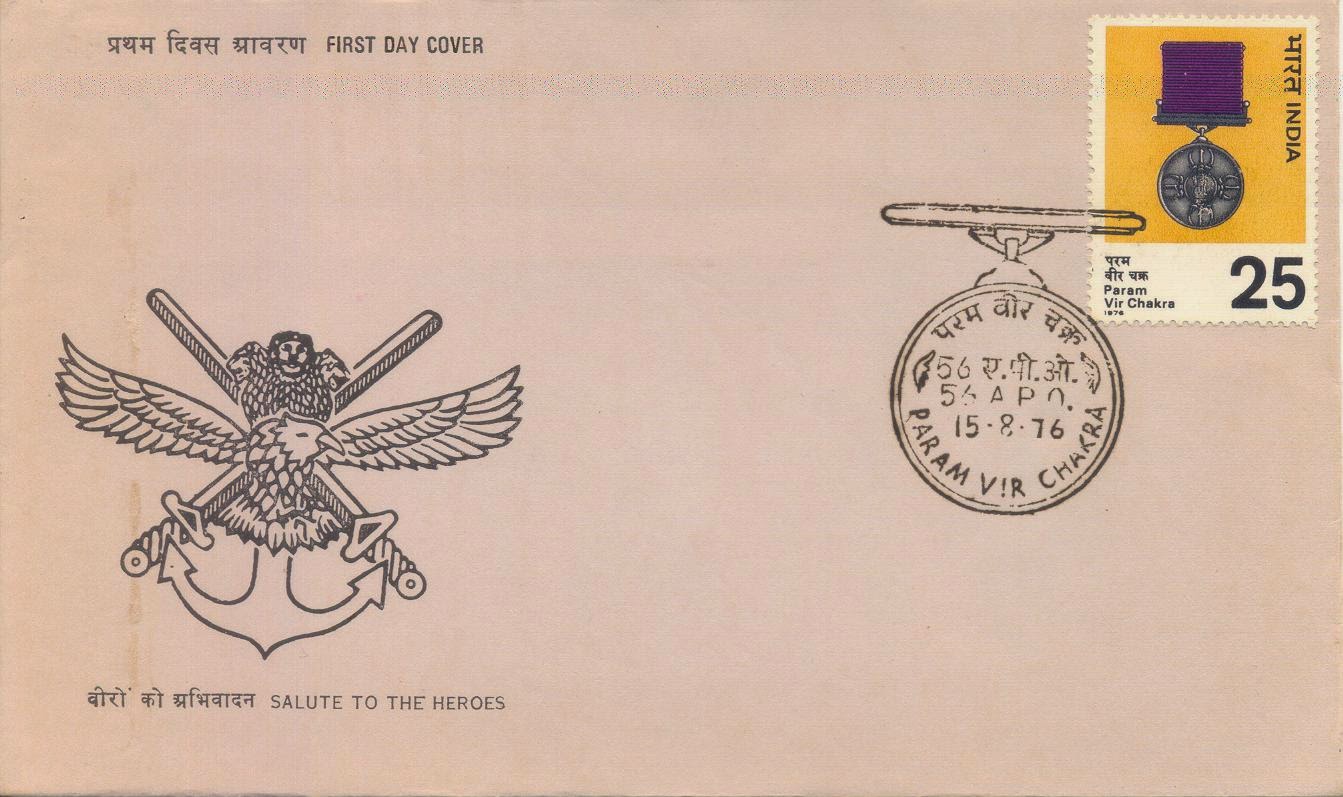Soldiers of all nations accept voluntarily hardship, risk, injury and death as normal hazards of their profession. For them courage, bravery and self-sacrifice are no more than a duty. However, occasions arise in the face of the enemy when ordinary bravery and normal call of duty are not good enough to turn the tide of battle or redeem the ignominy of defeat. Such occasions call for and inspire heroic deeds of valour and sacrifice beyond the usual capacity of human flesh and spirit. Throughout the ages, appreciative monarchs and grateful governments have recognised the exceptional exploits of their warriors by grant of promotion, titles, property, pensions and other tokens of esteem. In the modern world these tokens take the form of highly coveted, richly prized and sparingly given gallantry medals such as "Victoria Cross" of England,"Medal of Honour" of U.S.A., "Order of Lenin" of U.S.S.R. and "Param Vir Chakra" of India.
When India became independent in 1947, the armed forces were called upon to safeguard its frontiers against the Pakistani invaders in Jammu and Kashnmir. The jawans took up the challenge and performed remarkable deeds of valour, courage, endurance and seelf-sacrifice in repelling and defeating the Pakistanis. In recognition of the supreme sacrifices made by the armed forces personnel, the Government of India instituted ne gallentry awards for them, the highest of which is Param Vir Chakra. This is given by the President of India personally for the most conspicuous braveru or some daring or pre-eminent act of valour or self-sacrifice in the presence of the enemy whether on land, at sea or in the air. Late Major Som Nath Sharma of the Kumaon Regiment was the first to win this decoration for supreme bravery while leading his men against the Pakistanis near Badgam in Kashmir in November, 1947.
So high and exacting are the standards for the award that only fifteen Param Vir Chakra’s have been awarded during the last twenty-nine years. Of these awards, eleven were awarded posthumously. The spectrum of deeds covered by the awards ranged from acts of unusual and unexpected courage and devotion to exploits of unsurpassed boldness and supreme sacrifice. The nation is beholden to the select band of P.V.C. winners who have set a shining example to the youth of the country in daring, devotion to duty, courage and sacrifice.
The medal shown on the stamp on the cover is made of bronze and is circular in shape. It has on the face four replicas ofIndra's Vajra, embossed around the state emblem in the centre. On the reverse the words "Param Vir Chakra", are embossed in Hindi and English with two lotus flowers between the Hindi and English inscriptions. The medal is worn on the left breast suspended from a plain purple-coloured ribbon. The awards carry monthly allowance as lump sum grants and grants of land to all winners and their families.

No comments:
Post a Comment